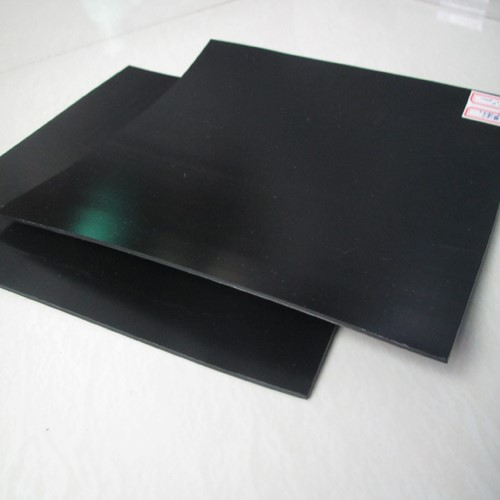I.Introduction
High-density polyethylene (HDPE) geomembranes, also known as hdpe geomembrane liners, are widely used synthetic membranes designed to serve as a barrier to fluids and gases. These membranes are manufactured from HDPE resin and are integral to modern engineering applications. The increasing demand for geomembranes in various industries highlights their significance in addressing environmental and infrastructural challenges. With rising awareness of sustainability and cost-effective solutions, the market for HDPE geomembranes has shown tremendous growth, paving the way for innovations in production and application.

II.Performance Analysis of HDPE Geomembranes
Basic Characteristics
HDPE geomembranes are known for their superior performance in demanding environments. Their chemical composition makes them highly resistant to various substances, while their physical properties such as density, thickness, and tensile strength enhance their durability.
Density and Thickness: The density of HDPE materials ensures a robust barrier against fluid leakage. Standard HDPE geomembranes are manufactured in a range of thicknesses, typically between 0.5mm and 2.5mm, depending on the specific application.
Mechanical Strength: HDPE geomembranes exhibit excellent tensile strength, making them suitable for use in high-stress environments. Their resistance to elongation and tearing ensures long-lasting performance, even under extreme pressure.
Tear and Puncture Resistance: These membranes are designed to withstand punctures and tears, crucial for applications in construction and environmental protection projects. The high tear resistance prevents accidental breaches during installation and operation.
Chemical and Environmental Properties
Chemical Resistance: HDPE geomembranes provide excellent resistance to chemicals, including acids, alkalis, and hydrocarbons. This makes them ideal for use in waste containment systems, such as landfills and chemical storage facilities.
UV Stability and Aging: Their ability to withstand ultraviolet (UV) exposure and resist aging ensures long-term functionality in outdoor applications. Properly manufactured HDPE membranes retain their integrity even under prolonged sunlight exposure.
Eco-Friendly Features: HDPE geomembranes are environmentally friendly. They are non-toxic and recyclable, making them a sustainable choice for projects requiring compliance with environmental standards.
III.Production Process of HDPE Geomembranes
The production of HDPE geomembranes involves meticulous selection of raw materials and advanced manufacturing techniques.
Raw Materials: HDPE resin is the primary component of these geomembranes. Additives such as antioxidants and stabilizers are incorporated to enhance durability and performance.
Manufacturing Techniques:
Extrusion Process: This process involves melting HDPE resin and extruding it into thin sheets. It ensures uniformity and consistent quality.
Biaxial Stretching: Stretching the membrane in two directions enhances its tensile strength and dimensional stability.
Composite Techniques: In some cases, HDPE geomembranes are combined with other materials to create multi-layered membranes for specialized applications.
IV.Applications of HDPE Geomembranes
HDPE geomembranes have revolutionized engineering by providing reliable, cost-effective solutions for fluid containment and environmental protection. Their versatility makes them indispensable in a variety of fields.
Containment and Waterproofing
Landfills: HDPE geomembranes are extensively used as liners in landfills to prevent leachate from contaminating groundwater.
Wastewater Treatment Plants: Their resistance to chemicals ensures effective containment in wastewater management systems.
Reservoirs and Storage Tanks: HDPE geomembranes create leak-proof barriers in reservoirs and tanks for water storage.
Civil Engineering Projects
Roads and Tunnels: These membranes prevent water infiltration and improve the stability of infrastructure.
Dam Reinforcement: HDPE geomembranes are essential for preventing seepage in dam structures.
Agricultural Applications
Irrigation Systems: Farmers use Wholesale Geomembrane solutions to line canals and ponds, ensuring minimal water loss.
Aquaculture: Fish farming operations benefit from HDPE liners due to their durability and resistance to contaminants.
Industrial Uses
Chemical Storage: HDPE membranes act as containment barriers in industrial facilities storing hazardous substances.
Mining: Tailings dams rely on geomembranes for effective containment and environmental compliance.
V.Advantages of HDPE Geomembranes in Applications
HDPE geomembranes stand out due to their unmatched performance and reliability, offering several key advantages:
Superior Containment: Their impermeability ensures optimal performance in preventing fluid leakage, critical for landfill liners and wastewater treatment plants.
Ease of Installation: HDPE membranes are lightweight and flexible, making them easy to transport, handle, and install in diverse environments.
Longevity and Durability: With a lifespan exceeding 20 years in most applications, HDPE geomembranes provide long-term solutions with minimal maintenance requirements.
Cost Efficiency: Investing in hdpe geomembrane liners is highly cost-effective. Their durability and performance reduce the need for frequent replacements or repairs, ensuring significant savings over time.
VI.Conclusion
In conclusion, HDPE geomembranes have emerged as a game-changing solution for containment and environmental protection. Their outstanding physical, chemical, and mechanical properties make them a preferred choice across industries such as civil engineering, agriculture, and waste management. As sustainability and cost-efficiency continue to drive industrial practices, the adoption of geomembranas will only increase, solidifying their role in addressing the challenges of modern infrastructure. With their unparalleled advantages and expanding applications, HDPE geomembranes are set to remain at the forefront of engineering solutions.
